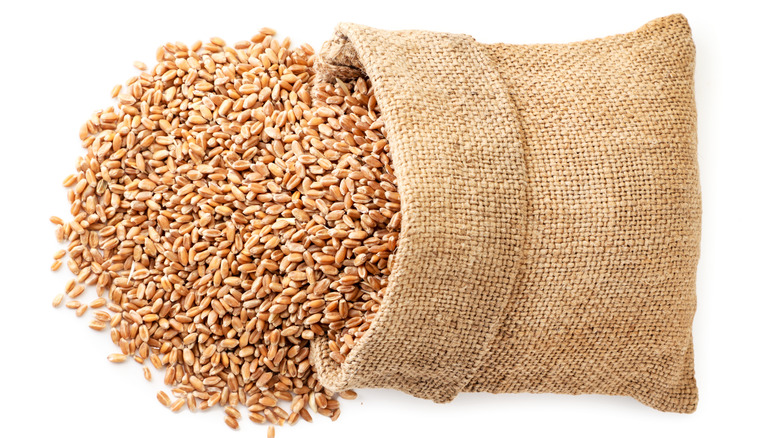Wheat Prices Are Falling, But It's Not For The Reason You Think
At about $780 per unit per 5,000 bushels, wheat may not be as cheap as it used to be before the COVID-19 pandemic, but it certainly isn't as expensive as it was back at the end of February, when food costs skyrocketed and prices rose to over $1,250 per trading unit after the war in Ukraine affected food supplies, per Trading Economics. But just when you thought the roller coaster ride over wheat was slowly grinding to a halt, it seems as though supplies are set to rise again, but not for the reason we might think.
Commodities analysts have told Reuters that global wheat demand for the second half of 2022 is set to plummet by between 5% to 8% from last year and that lower demand is caused largely by high prices. And while that amount doesn't sound like much, it could well be the biggest drop in demand that the commodity has seen in decades. As Erin Collier, who works for the UN Food and Agriculture Organisation as an economist put it, "There is going to be a drop in wheat demand for animal feed in Europe and China. Wheat demand for human consumption has also slowed in key importing countries around the world," she said.
Farmers are replacing wheat with other grains for animal feeds
Humans aren't the only organisms that are consuming less wheat. Food Dive says 20% of wheat is usually given to animals as feed, but high prices have changed that practice, so that "... wide price premiums of wheat versus corn have minimized wheat feeding globally, reducing demand," says Paul Hughes, who is S&P Global Commodity Insights' chief agricultural economist. In the EU, corn has replaced wheat as the feed of choice, while rice is king in Vietnam, per Reuters. To add to the glut triggered by the demand drop, this year's wheat harvests weren't as bad as farmers had originally predicted. Agribusiness research firm Gulke Group's president Jerry Gulke has said, "You're putting a heck of a lot of grain on the market. This is coming just as we finished our soft wheat and hard red winter harvest and going into our spring wheat harvest, and soon to be corn harvest" (via AG Web).
But just because wheat traders are seeing a combination of reduced global demand and an influx of wheat brought on by better-than-expected harvests as well as the return of Ukraine's grain exports doesn't mean wheat prices will stay down. Trading Economics says to go up again by the end of the year to about $835 per 5000 bushels.

